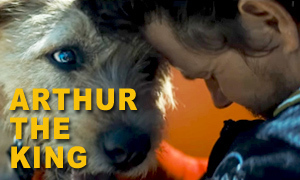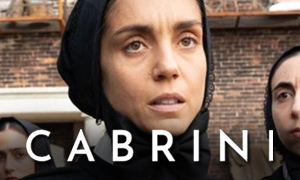Skin: History vs. Hollywood
| REEL FACE: | REAL FACE: |
Jamie Bell
Born: March 14, 1986 Birthplace: Billingham, Stockton on Tees, England, UK | Bryon Widner
Born: 1977 Birthplace: Albuquerque, New Mexico, USA |
Danielle Macdonald
Born: May 19, 1991 Birthplace: Sydney, Australia | Julie Widner
Born: abt 1971 |
Mike Colter
Born: August 26, 1976 Birthplace: Columbia, South Carolina, USA | Daryle Lamont Jenkins
Born: July 22, 1968 Birthplace: Newark, New Jersey, USA |
Why did Bryon Widner become a skinhead?
The Skin true story reveals that Bryon Widner became a skinhead in 1991 at the age of 14. After his mother died he was raised by an alcoholic grandmother. He had become a chronic runaway and had been regularly living on the streets. "I had a family member who was a skinhead, and I decided to try to impress him." In search of a place to belong, Widner says that "it almost seemed like a natural evolution for me." After joining, he was called a "Soldier of the New Reich" (AP). The group was also a source of food for him.
Widner came from a violent area of town that was predominately Mexican. He says that white kids got jumped a lot. "Violence was a very, very common thing, and you either get hard or you die. That was the rule," says Widner (700 Club). "I got beat up [and bullied] a lot. I think by the time I was 19, I enjoyed the fact that everyone feared me because of the [tattoos]. ... I didn't hate anybody. I hated myself, so I just kind of projected it outward. And if you got a kid who's self-destructive and genuinely just doesn't like themselves, it's easy to convince them that minorities have caused all their problems or to just turn that page right toward minorities. It's real easy to convince a kid of that. So, that's what happened to me, I got convinced that, you know, the Jews were at fault for all my woes, and you know, the black man's been keeping me down. This 'n' that. When all and all, it was because I was a screw up." -AP
When did Bryon Widner start getting tattoos?
"I started getting tattooed at about 14, 15. The tattoo thing was just to signify the whole tough guy look," Widner said in a 700 Club interview. "I got swastikas and stuff when I was like 16, 17. I got 'em more for shock value, because I really didn't understand the politics behind them. I just knew that they got me in fist fights quite often, so that was why I put 'em on my body. After that, that's when I decided, well, I should probably know what they're about, and that's when I started hittin' libraries and studying on this and that. That's when I started getting into the politics of everything. Before it was just to piss people off, honestly."
Was Skin inspired by the Bryon Widner documentary Erasing Hate?
Yes. Director and writer Guy Nattiv started working on turning Bryon Widner's story into a movie after he viewed the MSNBC documentary Erasing Hate about Widner's attempt to erase the hate from his life, both figuratively and literally. He endured the lengthy and painful process of having the neo-Nazi tattoos removed from his body (see video of his tattoo removal procedure). At first, Nattiv was unable to find funding for the film, and he instead made a similarly-themed Oscar-winning short film, also titled Skin. The success of the short film is what allowed him to make the feature.
Did Bryon Widner join a white supremacist group called the Vinlanders Social Club?
Yes, this was after the former neo-Nazi organization he belonged to, the Outlaw Hammerskins, disintegrated. Bryon and other former members of the Outlaw Hammerskins created a new organization they named the Vinlanders Social Club. "We started spreading like a disease," says Widner. "I was in charge of going to different towns in Indiana and setting up chapters, and I was an enforcer." Over the course of his 16 years as a skinhead, he also belonged to an organization named Blood and Honour, among others. Unlike real life, the movie depicts him as only ever belonging to the one gang.
Are the "Viking" skinhead group's father and mother figures, portrayed by Bill Camp and Vera Farmiga, based on real people?
The characters Fred "Hammer" Krager (Bill Camp) and his wife Shareen (Vera Farmiga) seem to have been inspired by similar figures in Bryon Widner's life, but we found no evidence Fred and Shareen actually existed. Rather, they seem to be included to emphasize the dysfunctional family structure that existed in such groups. In the film, Shareen gives the boys disturbing physical affection and has them address her as "ma."
Did Bryon's former gang do atrocious things?
Yes. His former gang, the Outlaw Hammerskins, did commit acts of violence, and the group it had split from, the Hammerskins, have been involved in harassment, assault and murder. While much of the violence happens domestically or against other factions, members have committed appalling acts of hate, including the 2012 shooting at the Sikh temple in Oak Creek, Wisconsin, which killed six people.
Did Bryon Widner really almost drink himself to death?
Yes. In researching the Skin true story, we learned that there was a point where Bryon was drinking a 30-pack of beer every day, sometimes accompanied by a bottle of Jack Daniel's if the beer wasn't enough. Unhappy and believing there was no way out of his life as a skinhead, Bryon had become depressed and turned to alcohol. He says that until he met Julie (portrayed by Danielle Macdonald in the movie), he had no one to talk to about his conflicting feelings with regard to his life. "If I would have talked to anybody about those feelings, they would have called me a traitor," says Widner, "and then I would have been branded as such and probably shot, so I just bottled it up and drank. That's all I did." -700 Club
Did a black activist really help Bryon to leave his life as a neo-Nazi?
Yes, in real life, Bryon's wife Julie contacted Philadelphia-based anti-racist activist Daryle Lamont Jenkins, founder of the One People's Project. Bryon and Daryle (pictured below) became friends as Daryle helped Bryon escape his life as a skinhead. However, his role in Bryon's life seems to have been heightened somewhat for the movie. Daryle Lamont Jenkins is portrayed by Mike Colter (Luke Cage) in the film.
In real life, others also helped Bryon to escape his life of hate. "Then I reached out to former skinhead T.J. Leyden, whom I'd been following on the Web," says Bryon. "He told me to call the [Southern Poverty Law Center]. That was February 2006." After a lengthy vetting process, the SPLC was willing to help Bryon find funding for his tattoo removal.
How many white supremacists has Daryle Lamont Jenkins helped to erase the hate from their lives?
"There were quite a few, actually," said the real Daryle Lamont Jenkins. "I've been doin' this for about, almost 20 years, and Bryon is just one of many, because people grow up, people eventually realize that this is not the world that is going to be compatible with their lives anymore. As they start to break away, they start coming to me or other people, and they just turn everything around. Some even go out and try to encourage others to get out there and get out of these things." -TIFF Q&A
Was Bryon Widner stabbed by a young kid during a clash with an anti-fascist group?
In the Skin movie, Widner is stabbed by a young kid, and, in retaliation, he beats the boy mercilessly and carves an "SS" into the boy's cheek. We found no evidence that this happened in real life.
Who paid for Bryon Widner's tattoos to be removed?
To stop Bryon from trying to use dermal acid to burn the tattoos off his face, his wife Julie contacted the Southern Poverty Law Center, a civil rights law firm. They agreed to help in exchange for information about the gangs. Like in the movie, the SPLC managed to secure funding from an anonymous donor, who paid for the extensive laser removal process. -TIME
Is the teenage recruit who ends up getting shot by the police based on a real person?
"[Gavin] is based on a real person that Bryon told me about," said director Guy Nattiv during a Toronto International Film Festival Q&A. "You know those recruits are coming at a very young age, and some of them got killed, some of them survived, but yes, they tend to bring them to the movement — it's like a cult, basically — at the age of fourteen. But the name Gavin, obviously, we had to change. But yes, it's based on the real guy."
Was getting the tattoos removed really as painful as it's portrayed to be in the movie?
Yes. "The pain was horrendous," says Widner, "but it was fairly easy for me to endure. I always told myself it was a penance. I deserved it because I've caused a lot of people a lot of pain. I've been a sh**head for a lot of years." It took 24 treatments over the course of a year and a half to have the tattoos fully removed. The procedures, which began in June 2009, were performed at Vanderbilt University Medical Center in Nashville (you can watch one here). Widner was put under for some of them. "It's hard when you can't escape your own skin. You can leave your past behind, but you can't run from your own flesh." Widner admitted that there were a couple times he wanted to throw in the towel due to the excruciating pain. -AP
Had Bryon Widner been in and out of jail?
Yes. During his 16 years as a skinhead, Widner had been in and out of jail, mostly for fighting. This included bar fights. "I always had anger issues," says Widner. Many of his fights were not against other races but rather rival skinhead groups. It was essentially gang warfare. -SPLC
Was Bryon Widner shot by neo-Nazis after he refused to participate in a racial murder?
No. We found no evidence that Widner had been shot in real life, nor did we find reports that the racial murder happened in real life. It's by this point that Skin seems to be living up to its "inspired by a true story" label, as it has taken a turn toward fiction. This includes other scenes toward the end of the movie.
Did Bryon and Julie's relationship unfold like it does in the movie?
In real life, they met at the white power concert Nordic Fest (shown in the movie) and then started talking a couple months later over the phone. Their phone relationship went on for a couple months. One night, Bryon came home half drunk after getting into a bar fight, and he called up Julie and proposed. It was at that moment that he decided he was done with his skinhead lifestyle.
"And we just got married at the Justice of the Peace," said Julie. "Yeah, to become engaged to somebody I'd only met in person once and talked to on the phone for a couple months was...pretty crazy."
"I love my wife," said Bryon. "My wife is my rock. She was a gift from God. That's all there really is to that. She saved my life." -Erasing Hate
Why did Bryon Widner decide to give up life as a neo-Nazi?
After a decade of being a skinhead, Bryon had started to see faults in his thinking that the white race was the master race. "I didn't really see it that way anymore," recalls Widner, "'cause I just knew so many white people that were just such scumbags that I couldn't say, 'Okay, every white person is somewhat superior than every black person,' when, you know, I'm seeing complete opposite. Kind of realized the only thing I had achieved in my life was a bunch of scars, a legal record, and halfway cirrhosis of the liver. That's it. I've achieved nothing else in life. Nothing positive. I was actually literally trying to drink myself to death. I was just looking for a way out. I was done. I had given up on life. I had given up on everything. I was just done."
The movie also shows Bryon Widner (Jamie Bell) giving up his life as a neo-Nazi in part because of his love for Julie (Danielle Macdonald) and her children, which helps him to realize that he doesn't need to belong to a group of fascists in order to be part of a family. This is in line with the true story. Bryon had been depressed about his life and was on the edge of suicide. It was then that he met Julie. "I just fell in love with her," says Bryon. She gave him something positive to live for. -700 Club
Did Bryon's wife Julie also have a troubled past?
Yes. In the movie, Bryon and Julie bond over their troubled pasts. In real life, "My parents divorced when I was about 9 and my mom ended up a single parent. She worked all the time," says Julie, who had also been molested when she was a child. "When I was 13, I had a mohawk, a swastika shaved on one side of my head, and an anarchy sign on the other. ... I didn’t think of myself as a racist. I was just rebelling against society. But I know now that I was raised in a family with racist beliefs." Julie joined the white power movement in her late 20s. She had dropped out of high school at age 17 after becoming pregnant with her first son. By the time she was 19, she had two kids and was a single mother. She would eventually marry a fellow skinhead who she'd met at meetings. It was an abusive relationship that she was only able to escape when he died in a car crash in 2003. -SPLC
How much did finding God transform Bryon Widner?
In researching the Skin true story, we learned that God played a much bigger role in Bryon's transformation than what is shown in the movie. "Not only did God change me physically," says Widner, "he also brought love into a world of hate and violence." He says that for some reason, one day his wife Julie picked up an old German Bible she had and started thumbing through it. She showed him a couple prayers and he started saying one of them, a serenity prayer, to calm himself in the mornings. He said that it started out as more of a curiosity than anything else. Then they went down to Tennessee one year to visit Julie's father for Christmas.
"My father-in-law took us to his church. It was a Southern Baptist Church out there, and something happened. The thing was, Julie felt the same thing, and I think it was almost at the same time. I mean, I don't know for sure, but you know, she looked at me and she was like, 'Did you feel that?' I was like, 'Yeah. We gotta do something.' We started praying at that point, praying and praying and reading the Bible. We actually made a promise to God. 'If you help us get out of this alive, we'll give our lives to you.'
Within a couple of months we were able to move to Tennessee, and we did, and first thing we did, we gave our lives to God, because there was no way I could have done it by myself. Once I was able to accept Jesus into my life, I was able to actually smile again. I was able to enjoy a day. I was able to be polite and be happy. I was able to enjoy my children. I was able to just enjoy things, and He did that. When He filled me, it filled. It patched the hole that was always leaking. It's been amazing, absolutely amazing." -The 700 Club
Did they really make Bryon choose between the gang and his family?
Yes, this happened after he got married to Julie and moved ten hours away. The gang was upset that he was no longer available to help carry out their "business." Instead, he was working full time to provide for his family. At the time his son was born, the president of the gang gave him an ultimatum to choose between the gang and his family. He chose his family and mailed back his gang patch. However, he quickly realized it wouldn't be that simple. -700 Club
Did the shootout happen in real life?
No. We found no evidence that the gang shot up their house as they rushed for cover, returning fire. This entire scene is fictional, including the killing of his dog.
Had Bryon and Julie been living apart during the tattoo removal process?
No. This is fiction. In the film, Bryon and Julie get into a fight prior to him getting his tattoos removed. They're apart through the removal process and Bryon shows up at her door after the process is complete. In real life, Julie was present (and often in the room) while Bryon was getting his tattoos removed.
Did Bryon Widner face life-threatening blowback after he left the neo-Nazi group?
Yes. It's true that they saw Bryon's departure as a sign of treason. "I wanted to get out, but I didn't know how. I didn't think there was a way out besides prison or death. ... And it's been absolute hell," said Widner in 2015, several years after he'd left the Hammerskins gang. "When I first got out, immediately we started getting death threats, people calling up 3 o'clock in the morning, and this went on for a couple years straight. Just constant harassment and death threats for like two years straight. We were living on red alert." -AP
Bryon Widner Interviews & Related Videos
In the video featured below, Bryon Widner talks about his life and how finding God has helped to transform him. It's an element of the true story that is largely left out of the Skin movie.







